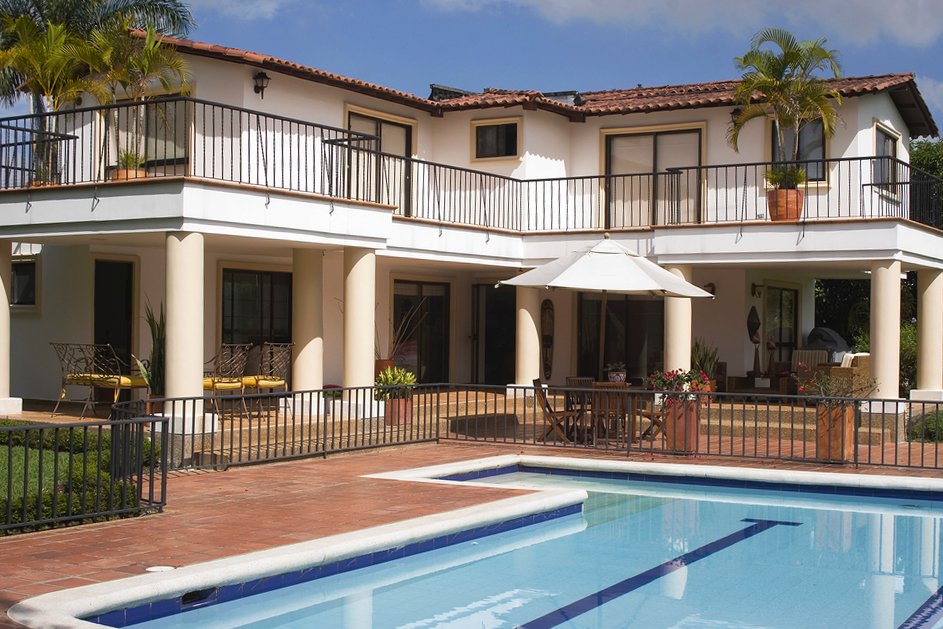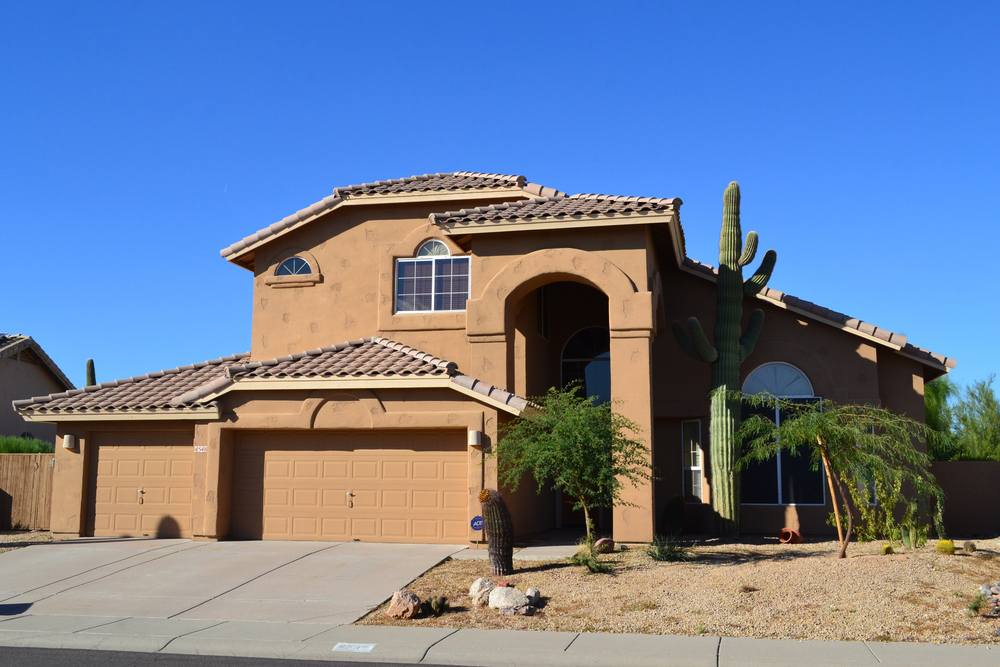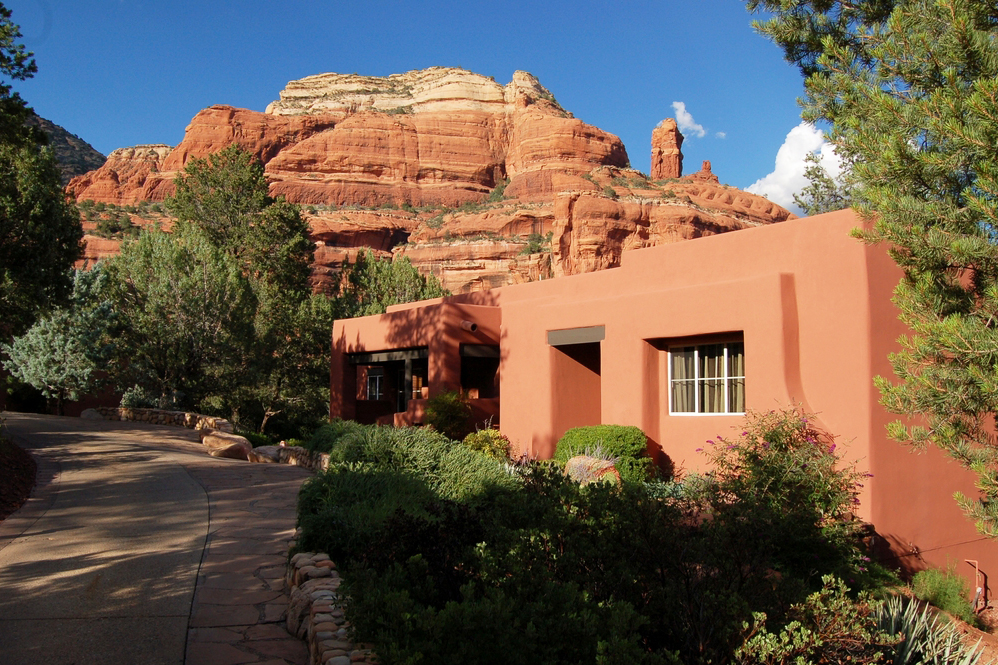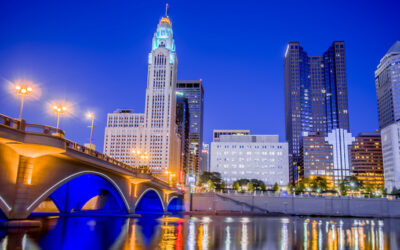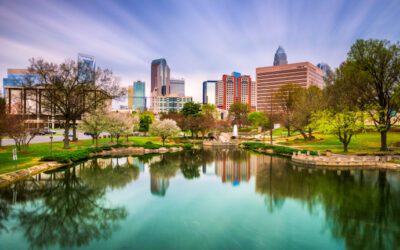Tucson is a collection of distinct neighborhoods, boasting a mixture of architectural styles. Historic neighborhoods, mostly found around Downtown Tucson and University, are rich with cultural charm, established citrus groves and towering palms, and vibrant styles that reflect the different economic periods of the past. Newer neighborhoods, which can mingle with the older areas or expand the outlying boundaries, show a variety of period revival styles.
The New York Times once called Tucson “an unsung architectural oasis,” pointing out that one of the city’s best-kept secrets may be the treasure trove of mid-20th-century architectural styles. Unlike nearby Phoenix where clusters of certain architectural styles can be found, Tucson is a mixed-bag of styles from mid-century modernist to pueblo.
Here’s a list of the most common styles found in the Old Pueblo.
Spanish Colonial
Commonly built between the years 1915-1945, the style borrows influences from Spanish Baroque, Spanish Colonial, Moorish Revival, and Mexican architecture. Easily spotted by the thick stucco walls, flat or clay-tiled roofs, exaggerated arches, and wood or wrought iron balconies, the style invites a sense of relaxation. Originally built around a courtyard to foster a connection with nature and the surrounding environment, the romantic style is typically one story and is the predecessor to the equally popular ranch-style.
Areas to find Spanish Colonial styles are in historic neighborhoods Aldea Linda and Blenman. Spanish Colonial Revival, an homage to the original architectural style, is commonly used in newer neighborhoods and can be seen in communities such as Miramonte, just two miles east of Downtown Tucson.
Sonoran
Some of Tucson’s oldest surviving homes, Sonorans date back to the 1840s. These row houses or townhomes are characterized by exposed mud adobe block, high ceilings, stone foundations, and visas (round roof timber). Homes are connected to the street by a zaguan (central hallway). Unique to Tucson, Sonoran style is typical in the barrio neighborhoods.
Areas to find Sonoran style are Barrio Anita, Barrio Santa Rosa, and El Presidio. You can also find new construction homes built in this style in the same neighborhoods as the original homes that serve as their inspiration. Whether you are looking for an original Sonoran home or a newer build that preserves the history of the style, you can find both in Tucson.
Mediterranean Revival
Mediterranean Revival residences are typically two-stories with symmetrical primary facades. Popular between 1920 and 1930, the historic style has been utilized by many new communities around Arizona as a favored style of builders. Other characteristic features include irregular floor plans, stock walls with projecting bays, red-tiled roofs, and concrete columns.
A great example of Mediterranean Revival can be seen in Linda Ronstadt’s Tucson home featured by Architectural Digest. Other neighborhoods showcasing the style include Tucson National, an older established area with many homes built from the 1960s to present.
Modern Ranch
Popular between 1930 and 1970, the ranch-style came about to encourage hospitality and family connection. Floor plans are typically in the shape of a “U” or “L” with low pitched roofs and exteriors of wood, brick, or stucco. Large sliding glass doors allowed ease for outdoor living space, and most styles were typically garnished with large inviting windows.
Modern Ranch styles are scattered throughout the city. The greatest collection of varieties may be seen in the neighborhood Winterhaven. The area is dominated by green lawns, enormous pine trees, and curving streets. Developed by C.B Richards, who mirrored the designs of the Midwest, four distinct ranch styles can be found: Traditional, Modern, Minimal, and Transverse.
Pueblo Revival
Popular between 1920 and 1950, Pueblo Revival design was inspired by the Spanish missionaries and pueblos of Mexico. Thick stucco walls in earthy-tones, rounded corners, and irregular parapets are featured. Newer construction can be seen using materials such as brick or concrete. Massive wood components like heavy doors, porch posts, or ceiling beams are often seen as is a traditional courtyard or enclosed common space.
Older neighborhoods like El Encanto Estates and El Montevideo Estates have multiple examples of Pueblo Revival. Newer examples can be found in Altura and Southeast Tucson.
Modern
Emerging in the first half of the 20th century and remaining popular after WWII, modern styles rebelled against classic architectural traditions. Features include open living spaces, clean lines, advanced materials like iron, glass, steel, and concrete to provide more function over form.
Modern styles can be seen in loft-inspired condominiums in the downtown area, older neighborhoods like Sam Hughes, and scattered throughout various neighborhoods in North Tucson. Pepper Viner boasts the style in multiple Tucson communities like Park Modern and Silverbell Commons in West Tucson.
Article contributed by Heather Nenadovich for Neighborhoods.com.
